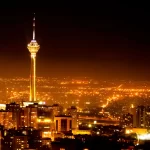1. Introduction
Light pollution has gradually become a serious challenge in modern societies, emerging as one of the environmental issues. This article aims to analyze the types and sources of light pollution, explore its hazards on human health and the environment, and then introduce solutions to address this growing challenge.
2. Types of Light Pollution
2.1. Urban Light Pollution
Resulting from artificial lights in urban areas, identified as the primary sources of light pollution. Excessive use of street and building lights contributes to the escalation of this type of pollution.
2.2. Spatial Light Pollution
Refers to light emitted into space from artificial sources, significantly impacting the observation of the night sky and stars.
2.3. Domestic Light Pollution
Associated with artificial lights inside homes, potentially causing disruptions to individuals’ circadian rhythms.
2.4. Industrial Light Pollution
This type of light pollution originates from artificial lights in industrial environments, affecting the surrounding space.
3. Hazards of Light Pollution
3.1. Effects on Human Health
The increase in the imbalance of melatonin hormone levels due to light pollution can lead to disruptions in circadian rhythms, sleep problems, and an elevated risk of diseases.
3.2. Impact on Wildlife
The rise in urban light can disorient animals, disrupt their daily routines, and increase the risk of predation by predators.
3.3. Effects on Visually Impaired Individuals
Excessive ambient light can create difficulties for visually impaired individuals in object recognition and navigating in the environment.
3.4. Impact on Dark Skies
Light pollution diminishes the quality of observing the night sky, adversely affecting the dark and light-free spaces.

4. Solutions to Combat Light Pollution
4.1. Smart Lighting Systems
The use of intelligent lighting systems that adjust to the ambient light needs can reduce energy consumption and light pollution.
4.2. Use of Adjustable LED Technology
Utilizing LED technology with adjustable intensity and color control is proposed as an effective solution to mitigate light pollution.
4.3. Deployment of Filters and Protective Covers
Implementing filters and protective covers to reduce light radiation from various sources, especially external lights.
4.4. Community Engagement
Raising awareness in society and educating people about the effects of light pollution and optimal light usage can play a significant role in reducing this issue.
4.5. Regulation and Legislation
Establishing appropriate laws and regulations regarding the use of lights in cities and public spaces can contribute to reducing light pollution.
5. Conclusion
Light pollution poses a serious challenge to human health and the environment. Through the implementation of appropriate solutions and serious community engagement, it is possible to address and reduce this problem, thereby maintaining a balance in the use of lights in various environments.










